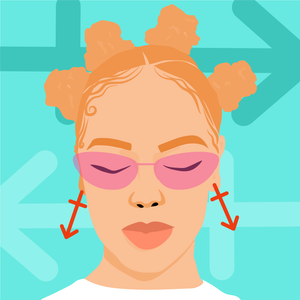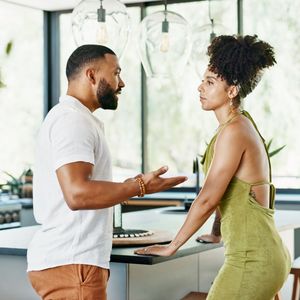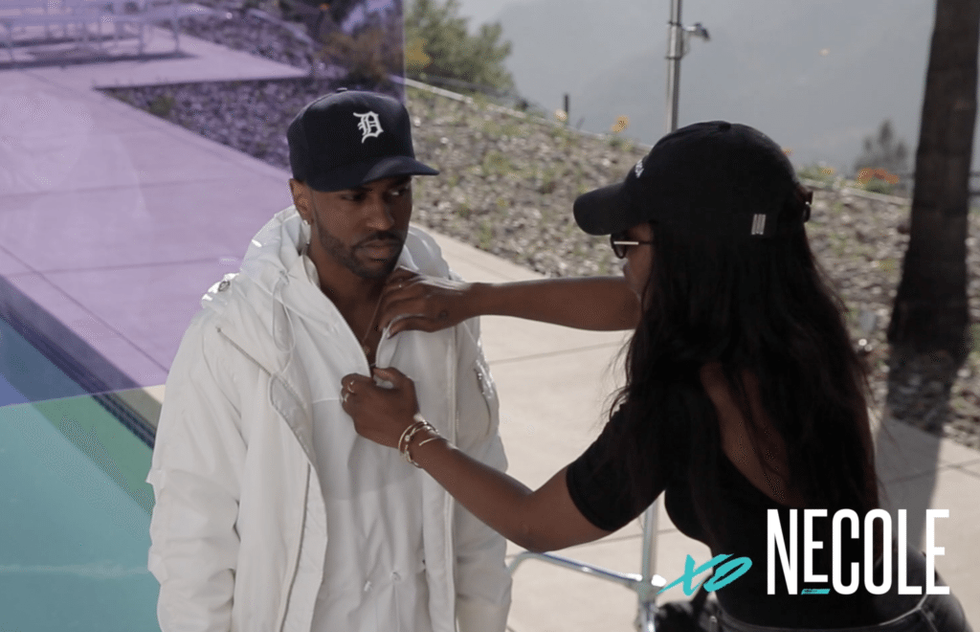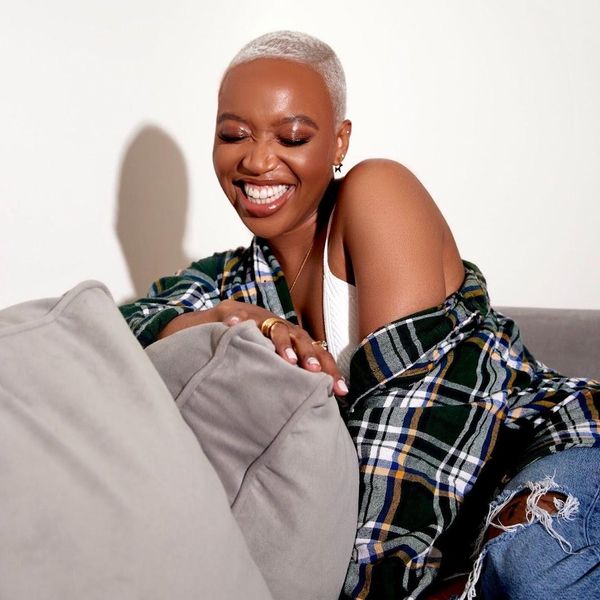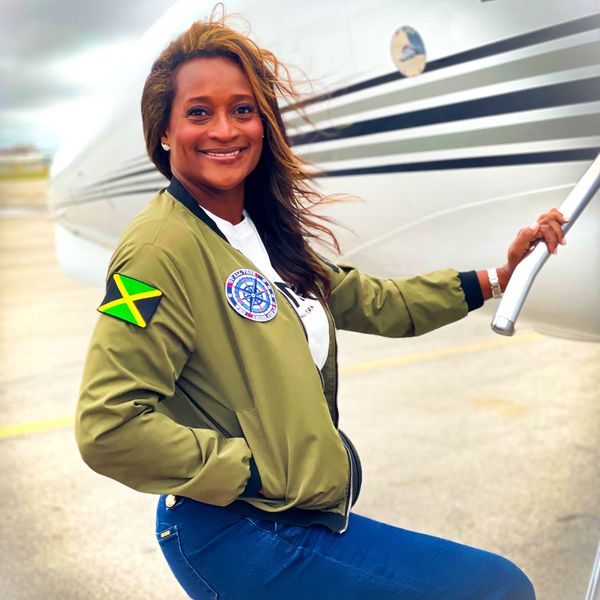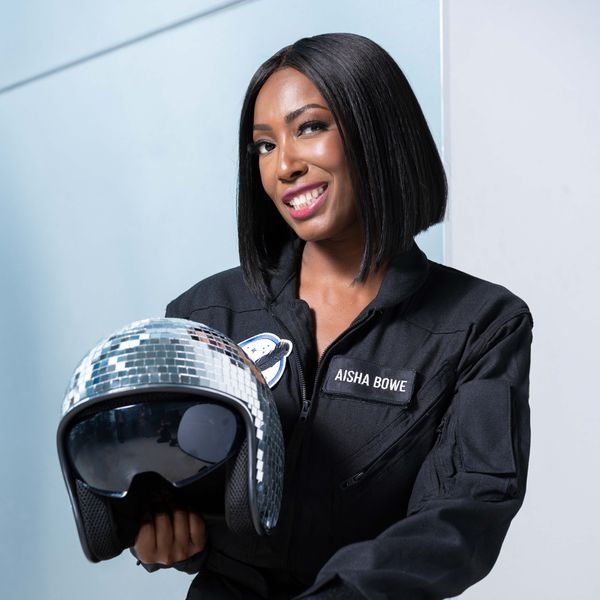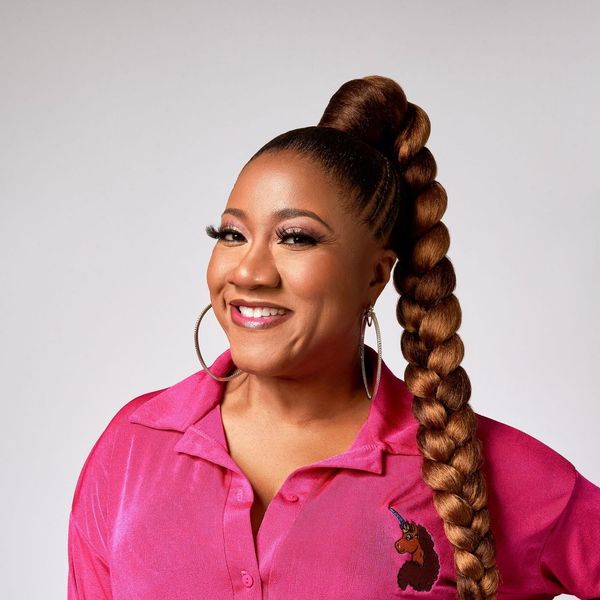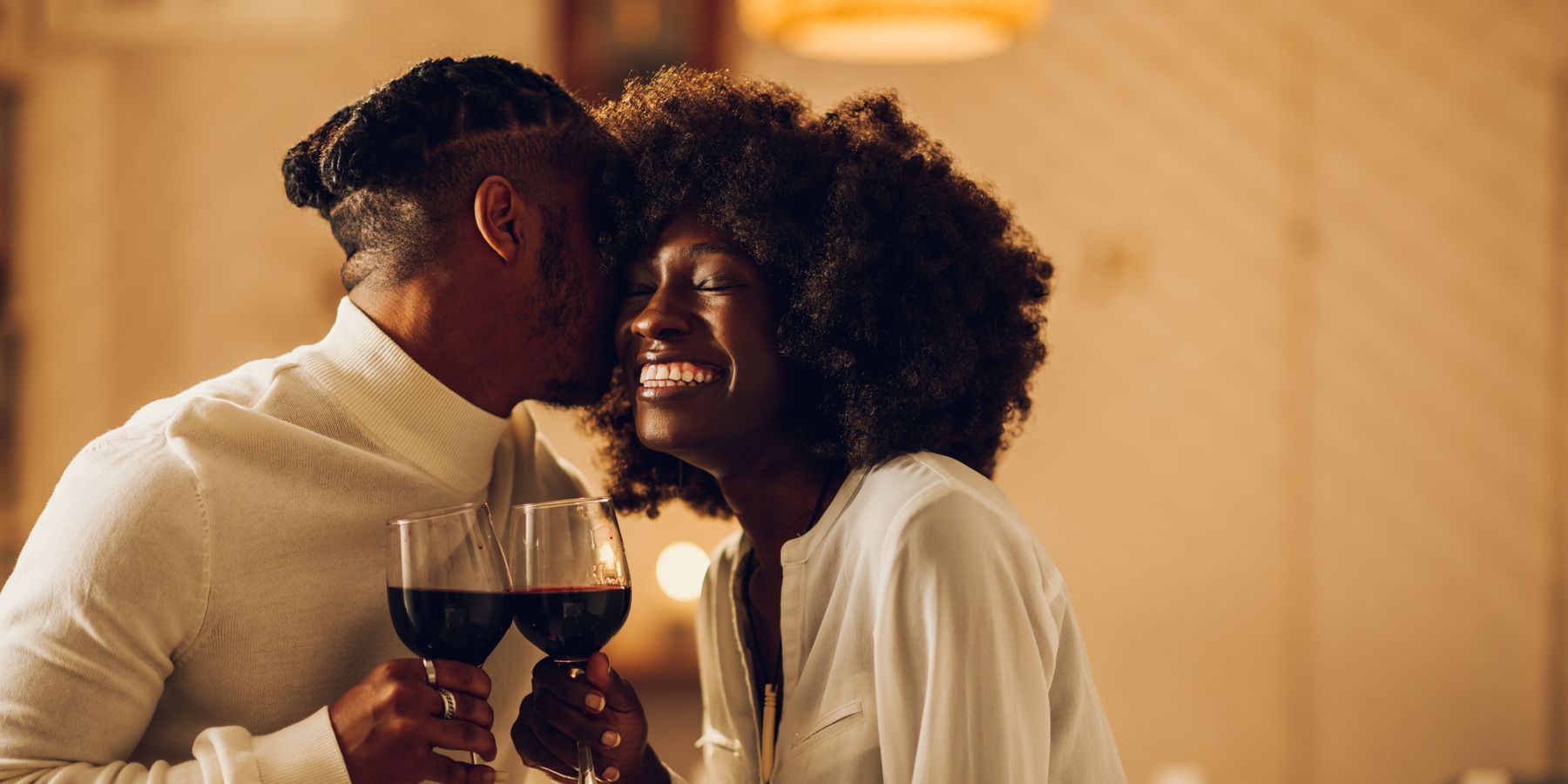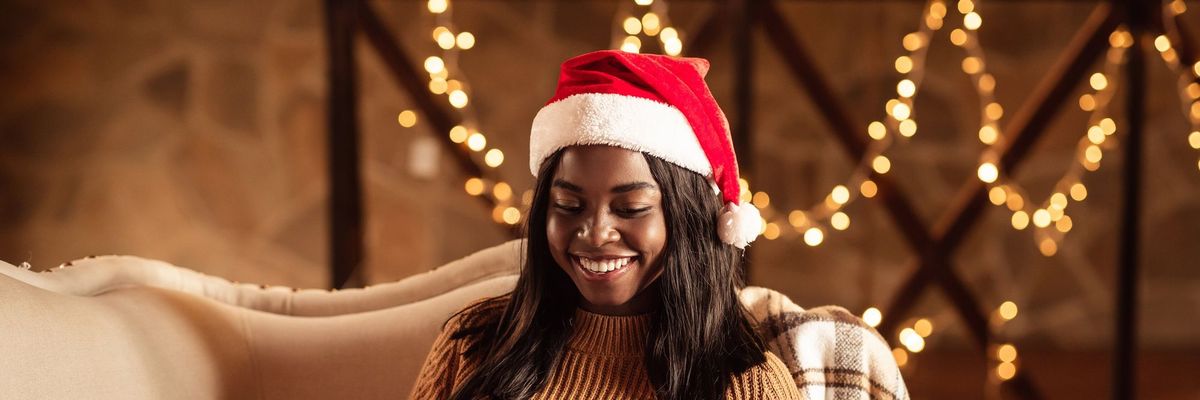Ade Samuel On How She Hustled An Internship To Become A Top Celebrity Stylist
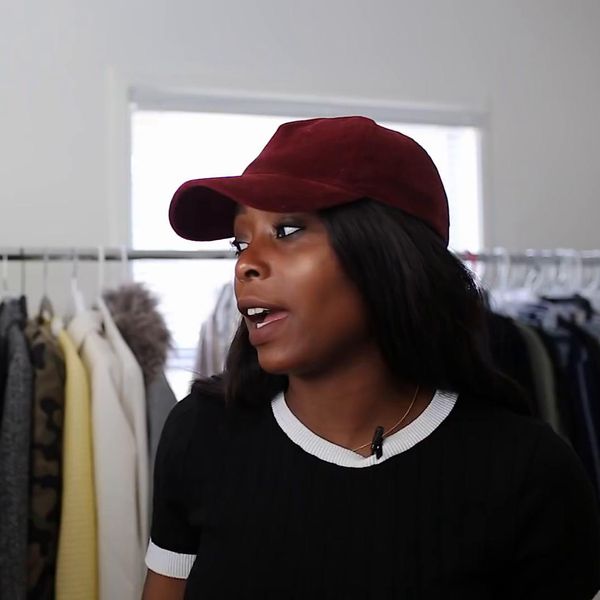
Ade Samuel is already hard at work when I walk into the living room of Yara Shahidi's home.
She moves swiftly back and forth between two full clothing racks and the Black-ish star—barefoot in an oversized black coat and a khaki-colored cap, her assistant closely in tow waiting to buckle a shoe or tighten a belt at a moment's notice. Yara playfully poses as Ade snaps photos of her finished look for reference before moving on to the next visual.
“Yara and I met when I did the Essence cover," she says, referring to the first-ever “Black Girl Magic" issue that also celebrated fellow trailblazers Teyonah Parris and Johnetta "Netta" Elzie on three separate covers.
At 27 years old, Ade is doing the damn thing. She has snagged clients like Nicole Richie and Christina Aguilera to Alicia Keys and Marsha Ambrosius, just to name a few who've walked red carpets of award shows and graced sets of high-fashion magazine shoots donning her style visions.
When it comes to her clients, Ade is all about her business. While prepping Yara for the Radio Disney Awards, I watch her mind turn as she directs her assistant in straight boss mode. After a few minutes, she remembers that I'm still in the room and kindly asks if I've gotten everything that I needed and promises to meet up the following week before hustling back over to Yara to finish her morning session. I catch the hint and head towards the door, feeling a little Alice in Wonderland as I exit the world of the fashion queen and tumble back into my own.
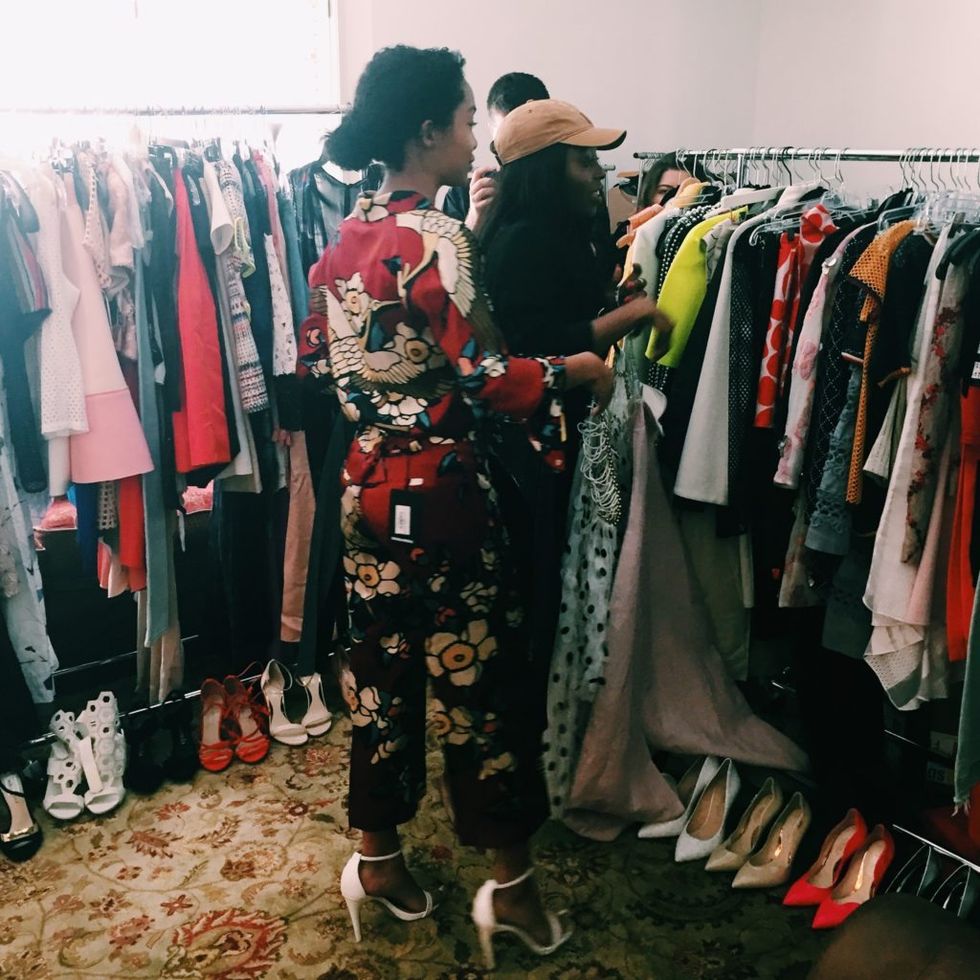
As a child, Ade undoubtedly knew that her place was in the fashion world. Born to Nigerian parents, where colorful garments with bold patterns and vast arrays of textures were a staple in the Samuel household, it's no surprise that she put pencil to paper drawing dresses and creating her own creative combinations.
“It's so funny because my family are not fashion-driven people," Ade says when we catch up a few days later. We're seated outside at a large round table at Aroma Coffee & Tea, one of her favorite food spots as confirmed by the cashier who gave her a knowing smile when we strolled up to the counter. “I honestly just had an innate feeling and love for it. When I would watch movies, I wouldn't be interested in the movie itself and what's happening, I'd just sit there like, 'Oh, shit, what are they wearing? How can I wear that to school?' I was a little girl, like six or seven, and I was like, I want to put this on.'"
“I honestly just had an innate feeling and love for [fashion]."
At Buffalo State University, she did a three-year program in Fashion, Merchandising and Textile Technology while picking up internships at fashion and beauty PR firm Tractenberg & Co. and W magazine. Working in editorial, she found that having a strong knowledge of high-fashion brands wasn't optional, it was a necessity. So she spent a semester abroad in Siena, Italy to understand the appeal of Italian-made designs. “I wanted to see how art influenced fashion and understand why art is so important to designers like Dolce & Gabbana and Valentino," says Ade. “It's because the art culture in Italy is insane, from the buildings, the architects, the painters."
After returning to the states, she interned at Teen Vogue while completing her formal education at the Fashion Institute of Technology and working as a manager at the South Street Seaport location for Express. At the end of her senior year, she was offered a position at the magazine as a fashion assistant, but it wasn't quite what she had in mind for her career path.
“I turned the job down at Teen Vogue because I wanted to be a stylist. Why would I take a position to be in the fashion closet when I wanted to be a stylist?" she says, biting into her egg, black bean and bacon breakfast burrito.
“I remember talking to James [Worthington DeMolet] and Karla Welch, and Karla telling me, 'You can always be a stylist. Working at a magazine is once in a lifetime. It's a great way to cultivate relationships. This is the way people are going to know who you are.' So I took their advice and ended up doing that; I went back to the magazine."
At Teen Vogue she slayed. So much so that she was promoted to Accessories Market Assistant Editor before a job with Kate Young for Season 2 of Fashion Star landed her in Hollywood styling for Nicole Richie, just shortly after leaving the magazine. But once the gig was up, the Bronx-native found herself on a flight back home.
Booking consistent jobs is one of the many challenges of being a stylist, and one that Ade doesn't take lightly. “There's always that fear as a stylist of will they book me again? So you always have to deliver. Every time it has to be something new, something fresh. It has to be something that makes people remember."
It's part of what drives her to go above and beyond to make her clients happy and to cultivate strong relationships with fellow stylists, brands and clientele. “You have to know your competition and you have to see what they're doing that's keeping them consistent in work. Think about what you can do in your niche and how to be an innovator with your clients. The reason why some stylists don't find consistent work is because they do the bare minimum. They do like, 'Okay, let me go call in clothes' or 'Let me go to the store and buy something and then put it on my client' when it's like you're costing them money now. A stylist like me or a bigger stylist has relationships. We don't need to go to Versace and shop. We can just get Versace in for you through our relationships with the PR company."
"Think about what you can do in your niche and how to be an innovator with your clients."
Three months after being back in New York, Ade received a referral of Nicole Richie to work as an assistant to Simone Harouche, stylist for stars such as Miley Cyrus and Christina Aguilera. Once again Ade packed her bags and headed for L.A.—and this time she wasn't coming back.
“I think it's all about showing people that you work hard without trying to show them you work hard," says Ade. "Sometimes I run into interns who are trying so hard to prove to me that they're doing work instead of just doing it."
"The work is going to show for itself."
I try to please who I'm working with and just make them feel comfortable and at peace. At the end of the day, styling and fashion is such a stressful industry that the assistant, intern or whoever you're working with should alleviate that. That's what I always try to do and that's my mentality about assisting and being a part of this space and energy of people when it comes to work. How can we alleviate each other's stress? How can we work with each other to make magic happen?"
Ade pauses to check her phone as I glance at mine. We're running late. “Let's head out," she says, taking a last swig of her latte.
I navigate the snake-like roads through Hollywood Hills, and park outside the home of Ade's client. Minutes later, Ade pulls up and heads inside, instructing her assistant to grab the garment bags before walking through the gate. After a few moments, she waves me inside the door of Big Sean's house.
“With Sean, he's street but then he's also high fashion," Ade says at she sets up the clothing rack for their styling session. “I love to do research based on the event that I get. When I look at a different red carpet or a different premiere, I usually do my research based on what people have worn in the past, then I develop and go from there."
Earlier, Ade confessed that Big Sean was one of the clients she really looked forward to working with. “Because I liked his style," she says matter-of-factly. “I'm someone who likes a challenge in myself; I've never had a male client, but I knew I was able to do it. Big Sean, to me, has his own personal swag and style that's so trendy but yet not trying. It's his innate style to dress the way he does."
Ade's first session with the Detroit rapper was for the Grammy Awards, where his white and black tux and black patent leather Giuseppe Zanotti loafers became one of the most talked about red carpet looks of the night. In an interview with The Hollywood Reporter, Ade revealed that she referenced Al Pacino's character Tony Montana in Scarface for the formal fit. “It's kind of having that balance and looking for people, looking at different movies, and things that inspire me to differentiate his style and not make it so trendy," she says before rushing out of the room for more clothes.
It may be connections that have gotten her on the sets of high-fashion magazines, on the style team for Beyoncé's “Formation" video and working with A-list clients. But it's her work ethic and consistent dedication to her craft that's helped Ade brand herself amongst the fashion elite.
She hopes to not only have her name whispered amongst her clients, but also on the lips of the everyday consumer with her own shoe line Ade Samuel Shoes. “Everything that I've been doing—having my full time jobs, being an intern, assistant and then being able to turn around and create a shoe line—is still a shocker, but I'm happy that it's all come together and it's been major."
Despite the accomplishments that pad her résumé, Ade still has one thing in common with many of her fellow peers. “I think I'm still learning what my purpose is as I grow every day. It's something that I don't think I'm going to know or understand until I kind of get older, because every day I'm still figuring things out. I can't really put my finger to it, but I never get to a place where I'm like my purpose is to be a stylist, because I'm into so many other things. I'm a designer. I'd like to be on television. I'd like to be on-air, but I love clothes and I know that I'm great in that. I'm confident in doing that. Can I do other things? Yes, but I have to understand that it takes time."
One thing's for sure, on the road to purpose, she won't be easing her foot off the gas pedal anytime soon. “Slow down? What is that?" she laughs. "No, I really don't slow down now. I'm happy when my clients are happy. The fact that I am able to style my client, and make them feel good and confident on the red carpet or on the runway…that allows me to be appreciative. The fact that I spoke my dream to existence, I feel appreciative about that."
For this boss chick, it's full speed ahead as she takes the fashion industry by storm. No brakes necessary.
Go behind the scenes with Ade as she styles Big Sean and Yara Shahidi below!
This Is How To Keep 'Holiday Season Stress' From Infecting Your Relationship
Hmph. Maybe it’s just me, but it seems like there is something really weird happening in the fall season air (because winter doesn’t officially begin until December 21) that cuddle season is in full swing while break-up season is as well. In fact, did you know that break-ups are so popular during the holiday season that December 11 is deemed Break-Up Day?
The reasons why relationships shift around this time vary; however, I did both roll my eyes and chuckle when I read that a very popular one is because it’s an easy way to get out of getting one’s significant other a Christmas present. SMDH.
Anyway, I personally think that the less shallow folks out here may contemplate calling things “quits” or they at least distance themselves a bit from their partner (and what I’m referring to is serious relationships) due to all of the stress and strain that oftentimes comes with the holidays whether it be financial, familial, due to their tight schedules or something else.
Listen, I would hate for you and your man to miss the fun and happiness of experiencing this time of year, all because you are so overwhelmed or irritated that you can’t really enjoy it. That’s why I have a few practical tips for how to avoid allowing the typical holiday season stress from INFECTING your relationship.
Manage Your Expectations
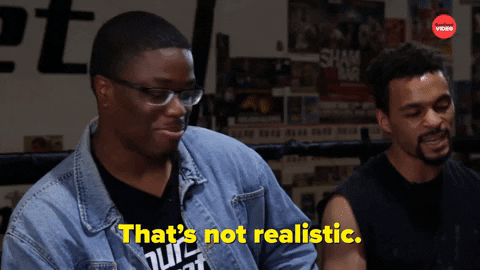 Giphy
GiphyUnmanaged expectations. If there is a main reason why the holiday season tends to be so stress-filled for so many people, I’d bet good money that this is the cause. And when you’re in a long-term relationship, expectations can manifest themselves in all sorts of cryptic and/or unexpected ways. You might have relatives who assume that you are going to be with them for Thanksgiving or Christmas when you have other plans in mind. You might be thinking that you are going to spend one amount for presents while your man is thinking something totally different. When it comes to scheduling, your signals may be crossed.
And you know what? To all of these scenarios, this is where clear and consistent communication come in. Don’t assume anything. Don’t dictate anything either. From now until New Year’s, mutually decide to check in once a week, just to make sure that you are both on the same page as it relates to the holidays and what you both are thinking will come along with it. The less blindsided you both feel, the less stressed out you will be. Trust me on this.
Set (and Keep) a Budget
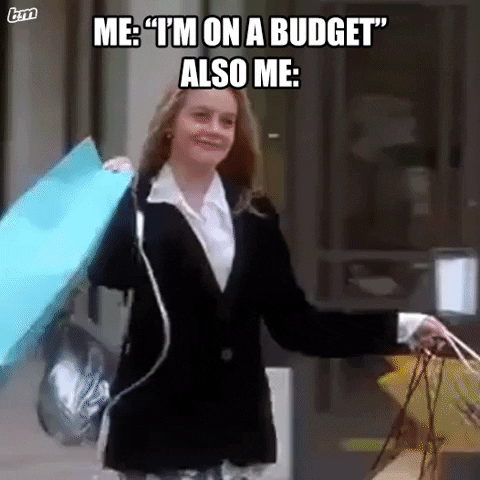 Giphy
GiphyOkay, so I read that last year, 36 percent of Americans incurred some type of holiday-related debt. Hmph. Last year, there was still some sense of normalcy in this country, chile, so I can only imagine what finances are gonna look like over the next several weeks. That said, since I don’t know a lot of people who don’t find being broke stressful, make sure that you and your bae set a budget and then stick to it this year — no ifs, ands or buts.
Because really, y’all — it doesn’t make sense to deplete savings and/or max out credit cards for a few days of giggles only to be damn near losing your mind because you don’t know how to make ends meet come Dr. Martin Luther King, Jr. Day.
And by the way, this tip doesn’t just speak to things like food and gifts; I also mean travel. If it doesn’t make a ton of sense (or cents) to be all over the place this year — DON’T BE.
Keep Matthew 5:37 at the Forefront
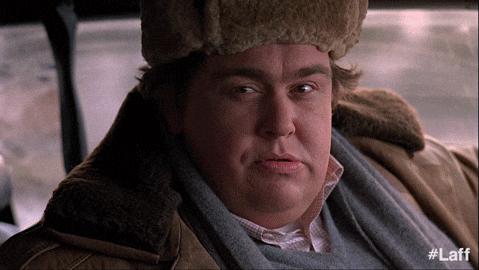 Giphy
GiphyIf off the top of your head, you don’t know what Matthew 5:37 says, no worries, here ya go: “But let your ‘Yes’ be ‘Yes,’ and your ‘No,’ ‘No.’ For whatever is more than these is from the evil one.” That verse right there? Oh, it’s a boundaries lifesaver! I say that because do you see “maybe” or “I’ll think about it” in there? Nope. LOL. It says that you should tell people “yes” or “no” and leave it at that — and that complements Anne Lamott’s quote, “’No’ is a complete sentence” impeccably well. Yeah, you’ve got to remember that anything beyond a yes or no to a request is privileged information; you don’t owe anyone details or an explanation.
Besides, if you are really honest with yourself, when someone asks you something and you give a “Umm, let me think about it” kind of reply, more times than not, you already know what your answer is going to be — so why not let you both off of the hook? Give your response. Commit to that. And let everyone (including yourself) get on with their lives and schedules.
I promise you that when it comes to those holiday parties, you are pissing more folks off by not RSVP’ing or doing so and not showing up than just saying, “Thank you but not this year” off the rip.
Remember That Your Personal Space Is Privilege Not a Right
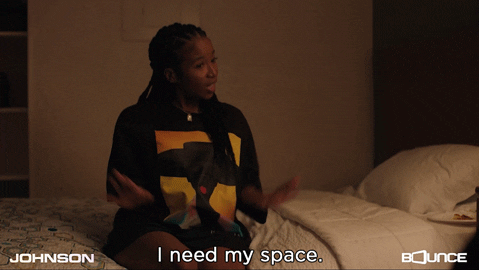 Giphy
GiphyA friend of mine recently bought a new house and invited me over to come see it. He’s a single man with no children, so as I was taking in all of the space that he had, especially as I walked through his finished basement, I joked about relatives coming to live with him. “Hell no” and “absolutely not” were pretty much his immediate responses as he went on to say that some folks even had the nerve to be offended when he told them that he had no intentions on taking DNA in.
Ain’t it wild how people think that your stuff is their right? And yes, that brings me to my next point. Your home is your sanctuary space. If you want to host folks this year — cool. If not, ALSO COOL. Please don’t let folks (family included) guilt you into how they want you to act or even into what they would do if the shoe was on the other foot. You are not them — and as one of my favorite quotes states, “If two people were exactly alike, one of them would be unnecessary.” (A man by the name Larry Dixon said that.)
Hell, my friends? They know that I am good for sending them random things that they need or even want all throughout the year. Coming over to hang out at my pace, though. Uh-uh. Chalk it up to being a card-carrying member of the ambivert club yet I like keeping my living space personal — and I sleep like a baby, each and every night, for feeling that way.
Always remember that your space, your time, your resources, your energy and shoot, yourself period (including your relationship), are all things that are your own. You get to choose how, when and why you want to share them. The holiday season is certainly no exception.
Cultivate Some “You Two Only” Traditions
 Giphy
GiphyIt’s not uncommon for some couples to hit me up after the holiday season to “detox.” Sometimes it’s due to the financial drama (and sometimes trauma) that they experienced. Sometimes it’s because they allowed their relatives (especially in-laws) to get more into their personal business than they should’ve. More than anything, though, it tends to be because they didn’t get enough quality time together and so ended up feeling “disconnected.”
Please don’t let that happen. Listen, I’m not even a holidays kind of woman and yet, I will absolutely sit myself down with some hot chocolate and chocolate chip cookies to enjoy a Hallmark holiday film or two. Aside from the fact that most of them are lighthearted and sweet, I also like that they usually focus on couples loving on each other amidst all of the holiday beauty and ambiance — which is something that all couples should set aside some time to do.
Maybe it’s a vacation. Maybe it’s a staycation. Or maybe it’s my personal favorite, A SEXCATION. Whether it’s for a few days, the weekend or even overnight — don’t you let the holidays go by without setting aside time for you and your man to celebrate one another. Don’t you dare (check out “Are You Ready To Have Some Very Merry 'Christmas Sex'?”).
GET. SOME. REST.
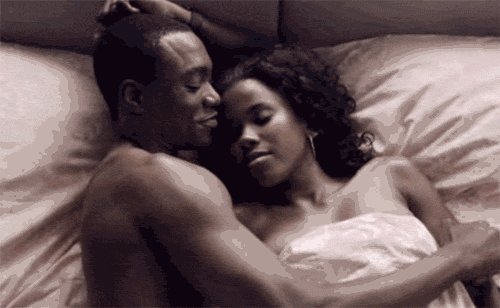 Giphy
GiphyI once read that 8 out of 10 people get stressed out over the holidays and 3 out of 10 lose sleep during to it — and when you’re stress-filled and sleep-deprived, that can absolutely lead to hypersensitivity, making mountains out of molehills and even not being in the mood for sex.
Your relationship can’t afford to go through any of this, so definitely make sure to prioritize rest. I don’t care how unrealistic it might seem during this time, sleep should never be seen as a luxury; it will always and forever be a great necessity.
That said, try to get no less than six hours of shut-eye in (check out “6 Fascinating Ways Sex And Sleep Definitely Go Hand In Hand”) and even ask your bae to take a nap with you sometimes (check out “Wanna Have Some Next-Level Sex? Take A Nap, Sis.”). Not only will sleep help to restore your mind, body and spirit but, when it’s with your partner, it’s an act of intimacy that can make you both feel super connected, even in the midst of what might feel like chaos.
___
Holiday season stress is real. Still, never give it the permission or power to throw your relationship off. Put you and your man first and let the holidays be what they are gonna be, chile.
Let’s make things inbox official! Sign up for the xoNecole newsletter for love, wellness, career, and exclusive content delivered straight to your inbox.
Featured image by Shutterstock
How To Avoid Being An Emotionally Impulsive Spender This Holiday Season
Geeze. Can you believe that we are just a few days out from another Christmas? Yeah, me neither. In fact, because I’m not a holidays person myself (check out “So, What If You Don't Observe Holidays?”), it wasn’t until one of my clients was venting about how stressed out she was due to all of the holiday season procrastinating that she had been doing that I realized just how fast December is actually flying by.
If, like her, you’re feeling frazzled because, although you told yourself last year that you weren’t going to wait until the last minute to “handle your business,” you ended up doing exactly that, fret not. I’ve got 10 tips that can keep you from making emotionally-triggered decisions as far as your financial expenses are concerned. Merry Christmas. #wink
1. Create a Budget. Stick to It.
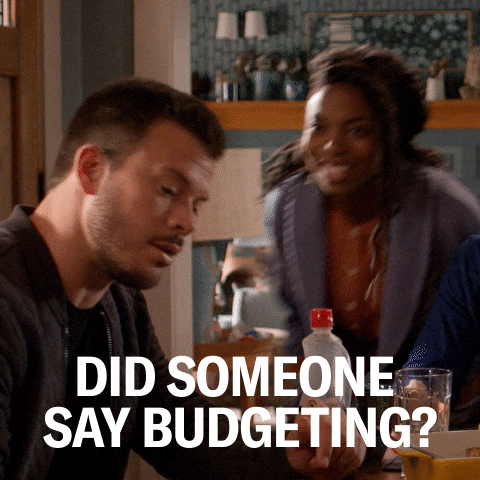 Giphy
GiphyBudgets, boy. I recently read that one of the reasons why they don’t work for a lot of people is because many folks don’t have a clue about how much money they spend on a monthly basis to begin with. SMDH. That said, at the end of the day, it’s important to remember that a budget is simply setting boundaries/limits on your spending — and being intentional about moving in this fashion is always a wise move; especially when it comes to this time of the year…especially being that it’s typical for half of all Americans to take on some type of holiday season debt with 17 percent needing six (or more) months to pay it off.
Know what can prevent this kind of financial chaos? A SPENDING BUDGET. Tips for how to create one of your own this year can be found here.
2. Never Shop When You’re Stressed or Pressed
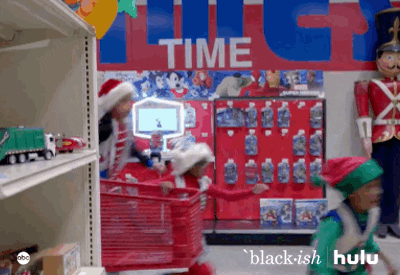 Giphy
GiphyYou know how they say that it’s not a good idea to go grocery shopping when you’re hungry? Although the holiday season can be a stressful time, avoid shopping for gifts (or décor or food for recipes) when you are feeling stressed out or pressed for time. More times than not, that cultivates anxiety which could cause you to either purchase things that you don’t really want or to spend money that you don’t really have (P.S. If you’re relying on credit cards, that qualifies as money that you don’t really have. Just sayin’).
3. Don’t Keep Up with the Joneses
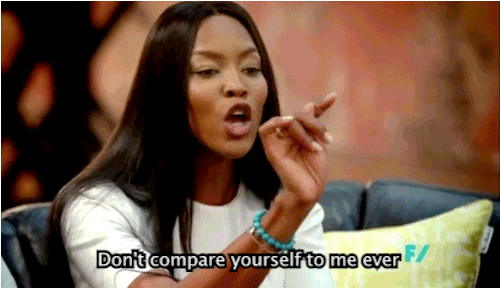 Giphy
GiphyKnow something else that can stress you out: trying to keep up with the Joneses. And y’all, now that we have social media, the reality is that envy is at an all-time high. That’s because it can be really easy to watch holiday engagements, holiday trips and folks bragging about the things that they’ve received in times past, only for you to find yourself wishing that you were them — or putting pressure on yourself and those in your world to keep up.
Listen, it is King Solomon who once said, “So are the ways of everyone who is greedy for gain; It takes away the life of its owners” (Proverbs 1:19 — NKJV) and “A sound heart is life to the body, but envy is rottenness to the bones” (Proverbs 14:30 — NKJV) and he’s considered to be the wisest man who ever lived (during his time — I Kings 4:30). Yeah, both of these verses are a spiritual reminder that whatever you are planning to do or give, do it out of the goodness of your heart — not so that you can low-key “outdo” the next guy.
4. No Need to “Tit-for-Tat”
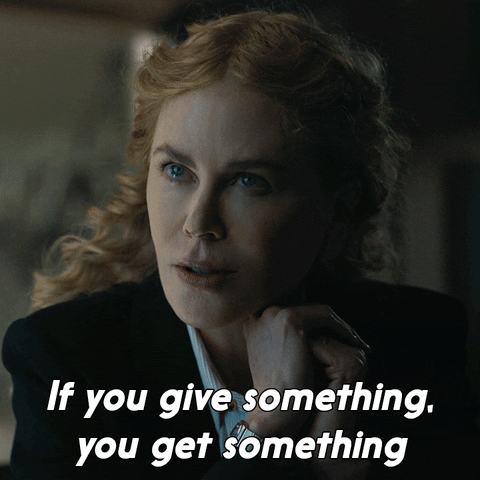 Giphy
GiphyThis one might be a bit controversial yet I’m totally okay with that. I don’t care what the occasion is, no one is OWED a present. A gift is a voluntary token of one’s appreciation or affection. That said, if you decide to give someone a present this year, don’t automatically expect something in return. If you get something, cool. If not, if you were giving for the right reasons, it really shouldn’t matter (RIGHT?). On the flip side, if someone decides to get you something and you don’t have something to offer in return, also cool.
Other than going to someone’s home for a holiday dinner or party, for anyone to feel like they should have something in hand because someone else does…that’s not giving, that’s competing — and that absolutely should not be the spirit that you are in (or around) during this time of year.
Again, a gift is not an obligatory thing. If you’ve always thought otherwise, it’s time to do some serious reprogramming.
5. Avoid the Pressure to Buy for Lots of Adults
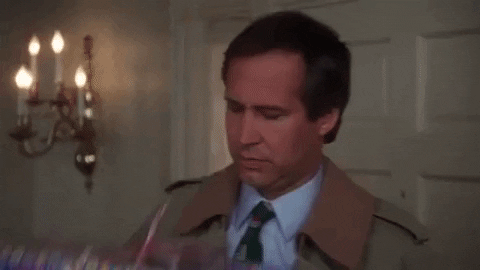 Giphy
GiphyLast month, Newsweek published an article that said it’s wise to not spend a ton of money purchasing gifts for adults. A financial expert in the piece said that it’s best to buy for kids because, more times than not, you’re going to get adults something that they already have a lot of, they don’t really need or they’re not going to use (beyond maybe regifting) anyway.
If you’re not feeling that insight, my take would be to exchange names and set a price cap for the grown folks. I say that because, I don’t think that people ever outgrow wanting something over Christmas. It’s just that the over-the-top energy should be reserved for the kiddies — and even then, the “4-gift rule” (want, need, read, experience) is probably your best bet for them…financially and otherwise.
6. Go for Thoughtful over Expensive
 Giphy
GiphyIt’s kind of wild how much close-to-torture folks send themselves through to purchase gifts that, a good 6-8 months now, most folks aren’t even going to remember. That’s why it’s also a good idea to purpose in your mind to get something thoughtful over expensive.
Honestly, that’s a big part of the reason why Etsy continues to be a go-to for gifts (for every occasion) for me. It’s because you can oftentimes get things customized/personalized which ends up meaning so much more to people than something that you bought at a generic department store that might have a high price tag yet still lacks in sentimentality and deep meaning.
7. Use Coupons and Promo Codes
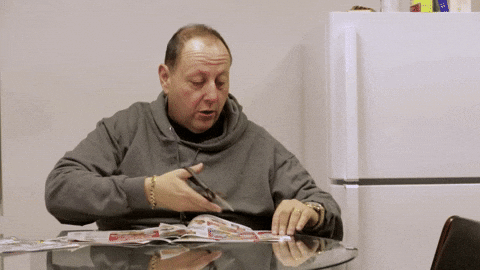 Giphy
GiphyCoupons (and promo codes) are a slippery slope in the sense that…they remind me of when I used to go overboard while thrift store shopping. I say that because, just because I might find several bomb dresses for under $20, what am I going to do with 50 of ‘em (over time)? It’s just as much of a waste of money as buying couture if neither option gets much use.
And that’s kind of the thing about coupons and promo codes. Some people end up overspending because they rationalize that so long as there are discounts attached, it’s all good. At the same time, this doesn’t mean that you should forego coupons and promo codes altogether. The key is to put together your shopping list (and budget) and then use discounts specifically for those items. If you do this, you could save well over $1,000 annually (at least, depending on what you decide to buy).
8. Avoid Add-Ons
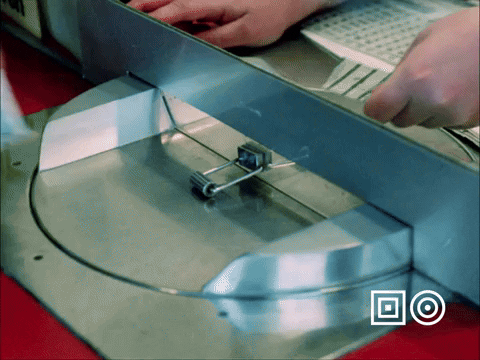 Giphy
GiphyYeah. Dodge add-on expenses. Add-ons like what? The first thing that comes to my mind is a warranty. What’s the chance that someone is actually going to need that? Another example is paying for things to be “professionally” gift wrapped. Chile, throw that stuff in a gift bag with some tissue paper and go on about your day. All good.
9. Rethink Gift Cards
 Giphy
GiphyIf there is any time of the year when there is a noticeable hike in gift card purchases, now would be it. And although they are a convenient approach to gift giving, at the same time, many come with hidden fees, the full amount oftentimes goes unused (which ends up being a waste of money) and they do come with expiration dates that are oftentimes forgotten.
So, if you’re someone who likes to wait until the last minute to do your holiday shopping, resist the urge to impulsively pick up a handful of gift cards. Unless it’s to a place that you know someone is going to use within the next few months, they could end up in somebody’s kitchen drawer for the next couple of years. And what a waste that would be.
10. They’ll Get It When They Do. And That’s Okay.
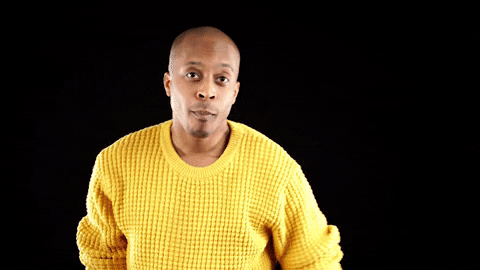
=
GiphyOne more. Although it is super thoughtful and proactive to get people their gifts in time for whatever occasion you purchased them for, if trying to reach that goal is going to require paying for rush shipping that is damn near as high as the price of gift or spending a lot of gas money that you don’t have at the moment to drive miles and miles away — take the pressure off to spend a ton of cash just to make sure that something arrives at December 25. Listen, through doing business with Etsy, I have learned that through this administration, there are all sorts of tariff issues going on and the USPS is slower than ever too, so paying more may not guarantee much.
The hack? Send a message that something special is coming…soon enough. The thought really is what counts (more times than not); plus, it builds anticipation of something good coming, even if it’s after all of the Christmas Day hoopla. And no one (with sense) is going to have a problem with that.
Now don’t you feel better? Happy Holiday Shopping, sis.
Let’s make things inbox official! Sign up for the xoNecole newsletter for love, wellness, career, and exclusive content delivered straight to your inbox.
Featured image by Shutterstock

